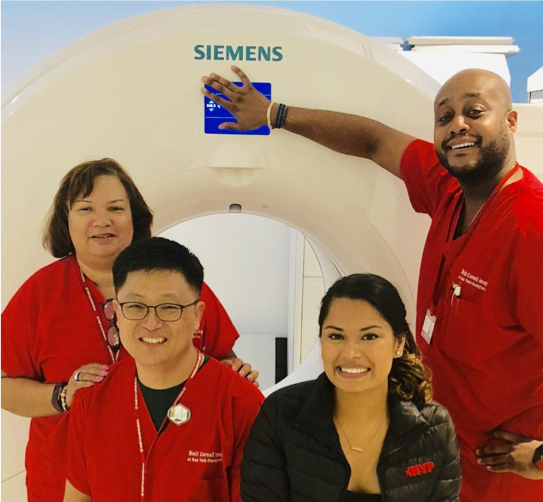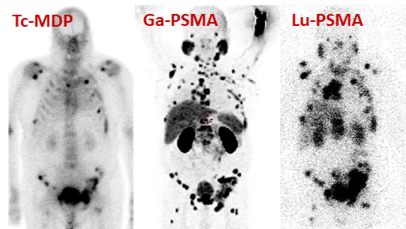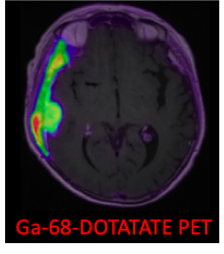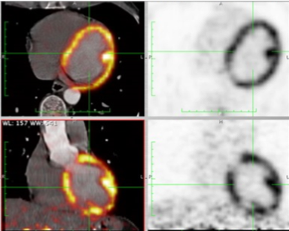Residency Program Director: Sandra Huicochea-Castellanos, M.D.
ACGME: 2003511052 – NewYork-Presbyterian Hospital (CORNELL CAMPUS)
Our Vision
Nuclear Medicine must transform itself and embrace its community—a transformation that must occur for precision medicine to align with molecular imaging and for each to reach its true potential. This process acknowledges not only the study of the aggregate population's needs but also the molecular signatures that make imaging and therapy personalized. As such, the Nuclear Medicine Residency is the training site for Molecular Imaging and Therapeutics (MI&T), an updated descriptor of increasingly sub-cellular interrogations developed over the last five decades.
Located in Manhattan's Upper East Side, part of the Weill Cornell Medicine Department of Radiology, we serve an incredibly diverse patient population and treat a wide spectrum of diseases. Many of our imaging agents are investigational but will become FDA-approved during the span of your training. Therefore, we are always preparing for the practice of the future. What we do today is but a subset of what the future will require to remain proficient in practice.
Overview
Our current one-, two-, and three-year ACGME-accredited Nuclear Medicine Residency Program (ACGME Number: 2003511052) provides specialized training in diagnostic and therapeutic nuclear medicine. As part of our academic mission, we proudly train diagnostic radiology fellows and nuclear medicine residents. Nuclear medicine and radiology faculty train in the core competencies of image interpretation, radiotherapy procedures, and molecular imaging research. Our in-house radiopharmacy and on-site cyclotron capabilities allow us to provide exposure to new radiopharmaceutical and radioisotope therapies, which is increasingly a part of personalized patient management.
Facilities

Our facilities include 3 PET/MRI scanners, which, to our knowledge, is the most significant single institution investment in these technologies in the world. These include:
- Two Siemens mMR PET/MRI Scanners.
- One GE PET/MR Scanner.
We also perform a large volume of daily clinical and investigational PET studies on four Siemens mCT scanners, which are read by both the Molecular Imaging and Body Imaging services.
One GE Millenium MPS Single-Head Camera.
We have an array of SPECT and SPECT/CT cameras to perform our single photon and post-therapeutic studies.
- Two GE Optimate 3/8" Crystal Dual-Head Cameras.
- Two GE Discovery 3/8 Crystal Dual-Head SPECT cameras
We are developing therapeutic infusion spaces and a research radiopharmacy to accommodate the increasing volume of approved and investigational therapeutic clinical trials we primarily perform with GU medical oncology and Endocrine oncology.
The Citigroup Biomedical Imaging Center (CBIC) has a state-of-the-art cyclotron and many hot cells to produce high-quality radiopharmaceuticals with radioisotopes, including Carbon-11, Nitrogen-13, Fluorine 18, Zirconium-87, and Iodine-124. Small animal PET and SPECT cameras and radiopharmaceuticals for studying dopaminergic and serotonergic systems are also available.
Oncological PET/CT Training

Oncological FDG PET/CT is probably the most commonly interpreted study, but the approval of 18F-FACBC ad 68Ga-DOTATATE has already begun transforming the standard clinical read beyond FDG. 68Ga-PSMA studies are also interpreted on a cost-recovery method, so most GU oncology studies now employ alternate radiotracers.
The daily reading sessions with our fellowship-trained dual-boarded radiologists coupled with multiple weekly educational conferences.
Neurological PET/CT & PET/MR Training

Our department is very active in brain molecular imaging research. We are currently investigating the use of new PET radiotracers that can assist in diagnosing and treating various brain, head, and neck tumors.
Cardiac PET Training
During their training, the resident will be exposed to cardiac viability imaging and myocardial sarcoidosis imaging. Our institution performs cardiac PET using 13N-ammonia and pharmacologic stress to evaluate myocardial ischemia or to combine with F18-FDG to detect myocardial inflammation, especially in patients with suspected cardiac sarcoidosis.
Schedule & Responsibilities

General Schedule
Normal clinical hours start at 8 a.m. and finish between 5 and 6 p.m. The resident may also participate primarily in the Endocrine and Myeloma Didactic and Case Conference, although greater conference coverage is desirable.
Research and the Molecular Imaging Innovations Institute (MI4)
As the Clinical Chief of the Molecular Imaging Innovation Institute (MI3), Dr. Joseph Osborne has positioned MI4 and his faculty (Dr. Ivanidze laboratory) to connect clinical care to database mining, preclinical studies (MI3—Belfer Research Building), and phase 0/1 studies where pharmacokinetic and pharmacodynamics studies will be performed (MI4—C.V. Starr Pavilion).
As inclusion is a large part of the mission, population health studies and outreach will be part of the work being done. It is distinct from the training program, but all are encouraged to join. Access to precision medicine and molecularly targeted therapies is as important to the service as the development of the technologies.
The MI4 space is connected to the nuclear medicine clinic and clinical radiopharmacy so that these early clinical trials can be performed near the necessary analysis of blood or urine-based correlatives.
Call Responsibilities
The call responsibilities change subtly every year. At present, there are no weekend call responsibilities.
Mentoring Cascade
A mentoring cascade is a form of intergenerational learning in which knowledge, values, and practice cascade from generation to generation. We have distinct mentoring teams composed of faculty members, residents, and medical students who interact and work together closely.
Electives and Vacation
The trainees have 20 days of vacation and an additional five sick days. In general, the trainees spend one month per year on elective, but these decisions are made based on seniority prior to training and with consideration of the other fellows scheduled in the clinic.
How to Apply:
The NYPH/WCM Nuclear Medicine Residency Program participates in the ERAS system for residency applications on the December application cycle.
Please note that we are no longer accepting for the 2026-2027 academic year as all of our spots are filled. The next application cycyle we will patrticate in is the 2027-2028 academic year.
This is subject to change so please check back in routinely for updates.
Important ERAS Application Dates:
- September: Nuclear Medicine starts accepting applications from residency applicants.
- November: ERAS application deadline.
The Nuclear Medicine Residency Program does not participate in the NRMP match. Once applications have been reviewed, interview invites will be distributed. After the interviews, the selection committee discusses the candidates and delivers offer letters.
If you have any questions regarding the Nuclear Medicine Residency Program, please contact:
Karishma Patel
Education Specialist
NewYork-Presbyterian Hospital/Weill Cornell Medicine
525 East 68th Street, New York, NY 10065
(E) kap4015@med.cornell.edu



